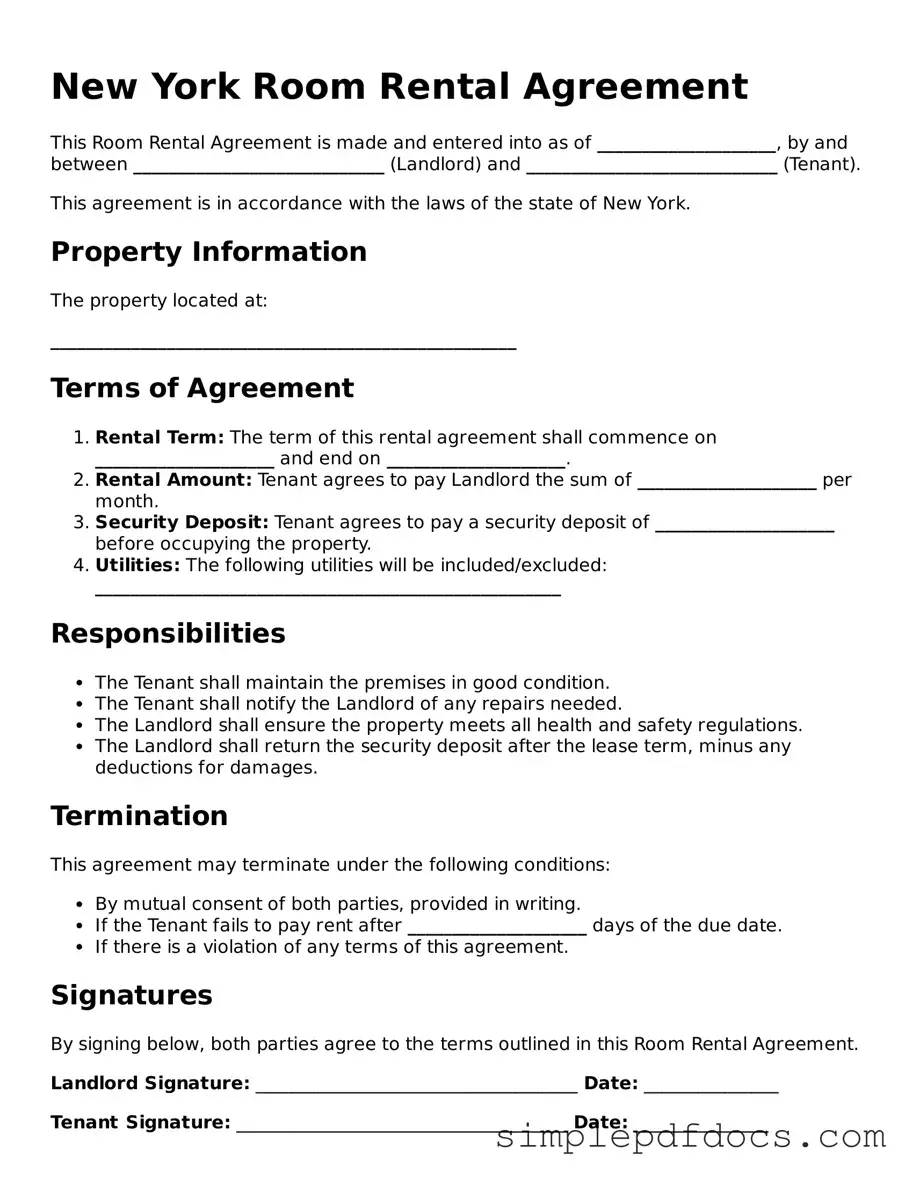Legal Room Rental Agreement Document for the State of New York
The New York Room Rental Agreement is a legal document that outlines the terms and conditions between a landlord and a tenant for renting a room in a residential property. This agreement serves to protect the rights of both parties while clarifying expectations regarding rent, maintenance, and other responsibilities. Understanding this form is essential for anyone involved in renting or leasing a room in New York.
Get Document Here
